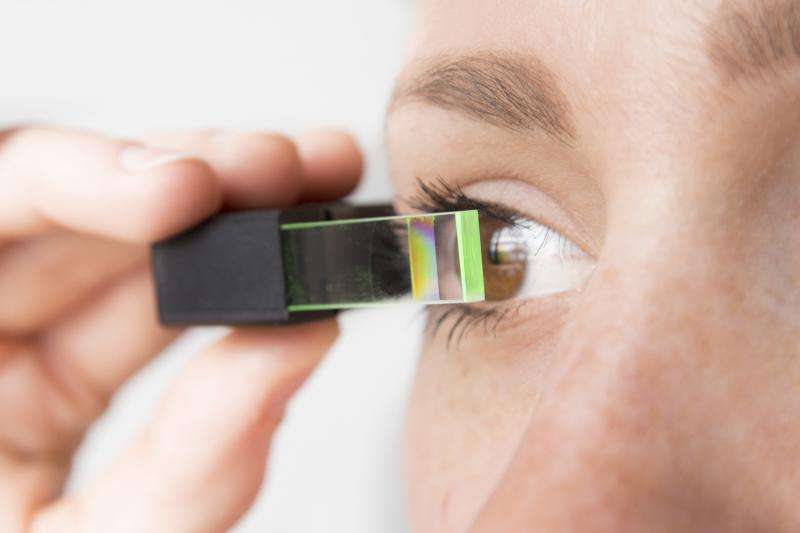Small and discreet data glasses for everyday use

Data glasses tend to be chunky, unstylish objects, so it's no wonder they haven't caught on among general consumers. Fraunhofer researchers have now developed a technology that allows the "specs" to be made in small, unobtrusive designs. The new glasses also correct for farsightedness.
Picturesque streets and winding lanes of one village enthrall tourists. They would love to have a little historical background on the buildings they are watching at. But unless they get out a guidebook and read up on them there, they remain in the dark. In future, tourists will be able to see all important information instantly as it flashes up on their data glasses. As they admire a building, they will also see useful facts displayed alongside it – similar to the speech bubbles used in comic books. And if they were trying to find their way around in unfamiliar surroundings, these glasses will be able to display navigation data taken from their smartphone directly in their field of view. This is known as "see-through data glasses."
Small and elegant
Moreover, the data glasses developed by researchers at the Fraunhofer Institute for Applied Optics and Precision Engineering IOF in Jena fulfill even more product functionality. In fact, it solves a problem that has plagued the manufacturers of such eyewear in the past: cumbersome frames. The awkward design means that few private users have been keen to wear them. "We designed our glasses to be small and discreet," says Dr. Peter Schreiber, group manager in the Microoptical Systems department at Fraunhofer IOF.
Models usual consist of two parts: a micro-display that generates the image and optics that project the image on the desired position. Both units are attached to the temple (earpiece). Although the micro-display of the new glasses measures 8 x 15 millimeters, making it a similar size to conventional models, the optics are only 5 millimeters long, almost one-fifth the length of previous designs. Instead of having single long optics, the scientists have placed many small optics alongside each other in an array. "This allows us to obtain the same results with a much shorter structure," explains Schreiber.
While commercially available data glasses often project the image on the edge of the field of view – for example, users have to look up and to the right – users of the new model see the information precisely where the context dictates it should be – in our example from earlier, right next to the monument our tourist is looking at. For this purpose, the researchers apply a nanoscale lattice structure – invisible to the human eye – to a glass plate, purposing it as light guide. In short: the optical image is coupled into the light guide through a lattice, guided to the required position, coupled back out through a lattice there, and reflected into the wearer's field of view. "The manufacturing methods are suitable for large-scale production and are already used in the industry, so making the glasses is easy and cost-effective," says Schreiber.
Glasses compensate for defects in vision
People who need glasses to read usually also have difficulties reading the information displayed in data glasses. However, Fraunhofer IOF's new glasses correct for farsightedness. "Our multi-channel approach compensates for farsightedness without any moving mechanical parts, such as the adjustable eyepiece in binoculars, and to set the focus for each wearer by purely electronic means," explains Schreiber. For users, this means entering their vision defect data in the corresponding app on their smartphone, which sends the relevant content and information to the glasses via Bluetooth. Everything else takes place automatically: the glasses adjust the display images in such a way that they appear sharp to users. The glasses are also able to partly compensate for other vision problems, such as astigmatism and shortsightedness.
The researchers have already laid the groundwork for the data glasses. At the World of Photonics laser trade show, which will take place in Munich from June 22 to 25, they will present a demonstrator model (Hall B3, Booth 341). The applications for the data glasses are by no means limited to tourism. Wearers could view their personal intensity levels and heart rate while exercising or playing sports, to give an example. And the glasses could also help people in their everyday working lives: for instance, mechanics responsible for maintaining and repairing big machines would no longer have to lug around hefty manuals; instead, the work steps could be displayed directly in their field of vision.
Provided by Fraunhofer-Gesellschaft



















